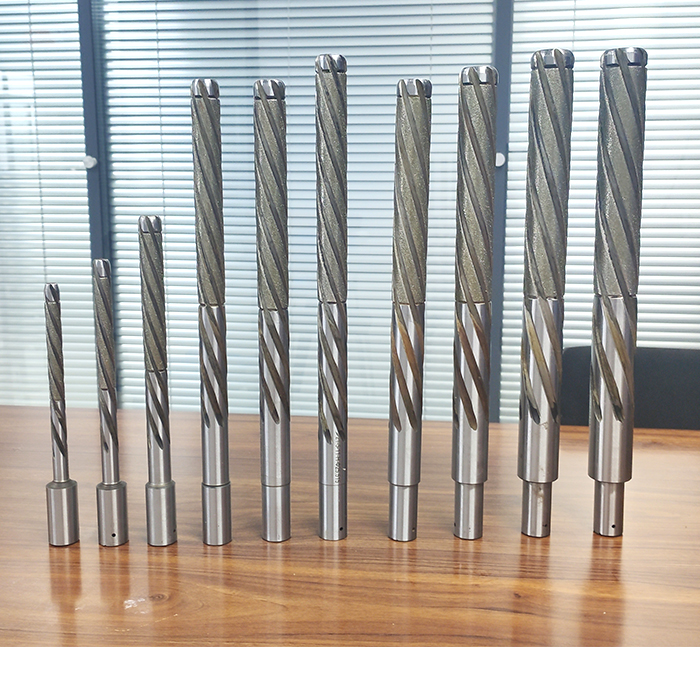Electroplated diamond reamers can generally be divided into internal plating and external plating according to different manufacturing processes. The traditional domestic electroplated diamond reamers are mostly external plating. It will destroy the natural cutting edge of diamond abrasive grains, affect the processing efficiency of diamond reamers and the surface quality of processed holes.
Therefore, the internal plating method of diamond reamers came into being. Today we will talk about diamond reamers based on relevant information. internal plating manufacturing process.

The internal plating manufacturing process of diamond reamers is roughly as follows: pre-plating treatment→tinning→crossing sanding→unload sanding→preliminary thickening→further thickening.
In that, the pre-plating treatment is divided into chemical degreasing with alkaline solution, strong etching with sulfuric acid, soaking and neutralizing with dilute alkaline solution (insulation treatment for non-plated parts), electrolytic degreasing, weak etching and other steps.
The electroplating process of the diamond reamer is as follows:
The first step: tin plating. In order to allow the coating to be released from the mold smoothly, a layer of tin can be plated on the inner hole of the mold, because the melting point of tin is low, and the mold and the coating can be separated by a little heating during demoulding.
The second step: crossing sanding. Since the composite electroplating of diamond particles is carried out in the inner hole at this time, in order to ensure that the diamond particles are uniform, single-layered, and firmly arranged on the basis of the hole wall, the sand-burying method can be used.
The third step: unloading sand. In order to save diamond grit, and for the further thickening process later, after the sanding is completed, it is necessary to remove the excess sand in the mold hole, then replace the plating solution, and thoroughly clean the electroplating device.
Step 4: Preliminary thickening. In order to ensure that the diamond particles can be firmly wrapped by the coating metal, thickening treatment is required on the basis of the original coating. As for the thickness of the coating, it needs to be determined according to the size of the diamond particles. It is advisable to wrap all the diamond particles with the coating.
Step 5: Further thickening. In order to ensure the full connection between the knife rod and the coating, it is necessary to continue to thicken the coating, the thickness is about 0.8 ~ 1mm, when the thickness reaches the requirement, you can turn off the power, take out the mold for cleaning, and the entire electroplating process is over.
For all inquiries, please fill in the form below (* are required) to send us a brief message, and we will get back to you as soon as possible.